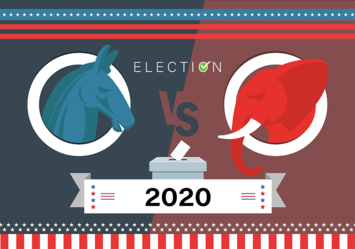
We search for prima facie evidence of vote-count irregularities in the 2020 presidential election, by the very simple device of looking for anomalous patterns in the vote counts at the county level.
We compare the 2020 presidential election outcomes by county in the five states that were considered decisive -- Arizona, Georgia, Michigan, Pennsylvania and Wisconsin -- with those in four large states that were not seriously contested: California, New Jersey, Ohio and Texas. Our purpose is to assess whether changes in outcomes in the five swing states from the 2016 result were unusual, by comparison with changes in states where manipulation of the results would have been pointless. The paper uses Tableau panels to allow readers to examine the county and state patterns in fine detail.
Geographic polarization of the vote, with Democratic gains being larger in counties that were already strongly Democratic, and similarly for the Republicans, was typical of the Midwest, of the Plains, Rocky Mountain states and of the Pacific Northwest. But the opposite pattern prevailed on the Eastern seaboard, in California and across the South, indicating substantial geographic depolarization of the electorate in many of those states.
We find that both candidates benefited in 2020 from a major improvement in ballot access and turnout. Biden’s victory was due to a slight differential gain, along with the disappearance of the third parties which had drawn small but significant vote shares in 2016. Biden’s proportionate gains in all nine states were larger in larger counties, but except in one state -- Georgia -- there is no evidence that they were greater in the swing states than in the non-swing states.
A figure called the “jelly-fish diagram” plots the change in Democratic vote share from 2016 to 2020 compared to the actual share in 2016. Three facts stand out. First, there was no difference between the performance of any county in 2020 in swing states as compared to non-swing states, except in two respects. The first is that a “tail” of small Texas border counties showed remarkable losses in the Democratic vote share. The second is that in Georgia, a number of important counties showed exceptional Democratic gains, testimony to the effectiveness of political organization in that state.
We conclude that there are no visible traces of vote-count manipulation in this data. Expanding ballot access, the disappearance of fringe parties, and -- in the case of Georgia -- political organization were the decisive factors in the 2020 outcome. Those who now seek to reverse the Democratic gains of 2020 -- by reversing the democratic gains in turnout -- know what they are doing.
Read the full paper here.
---
The authors are associated with the Lyndon B. Johnson School of Public Affairs, University of Texas, Austin.












